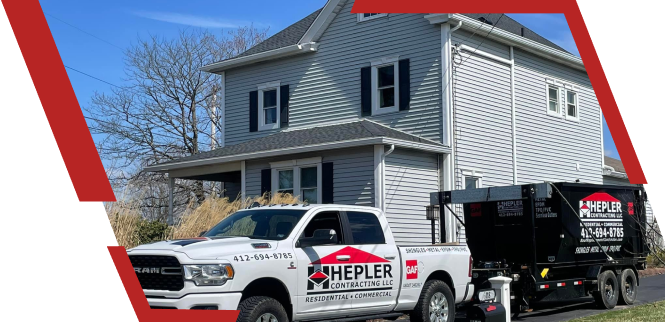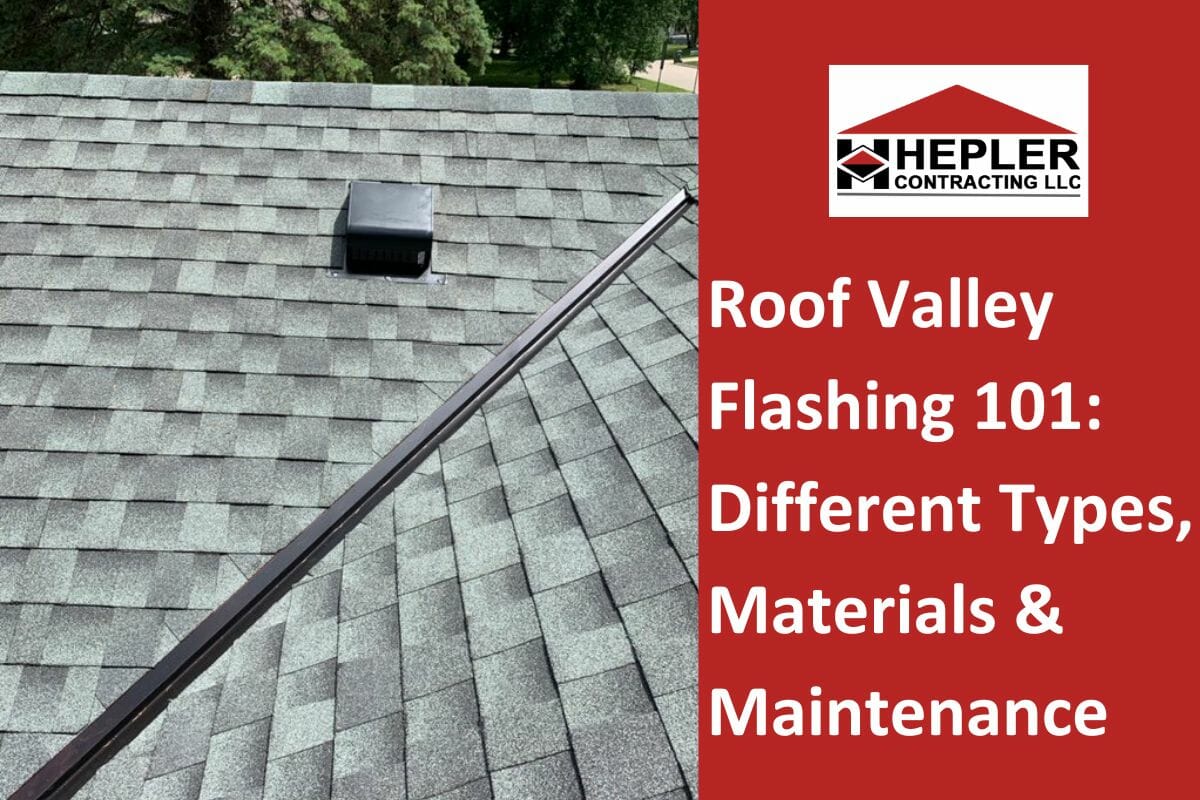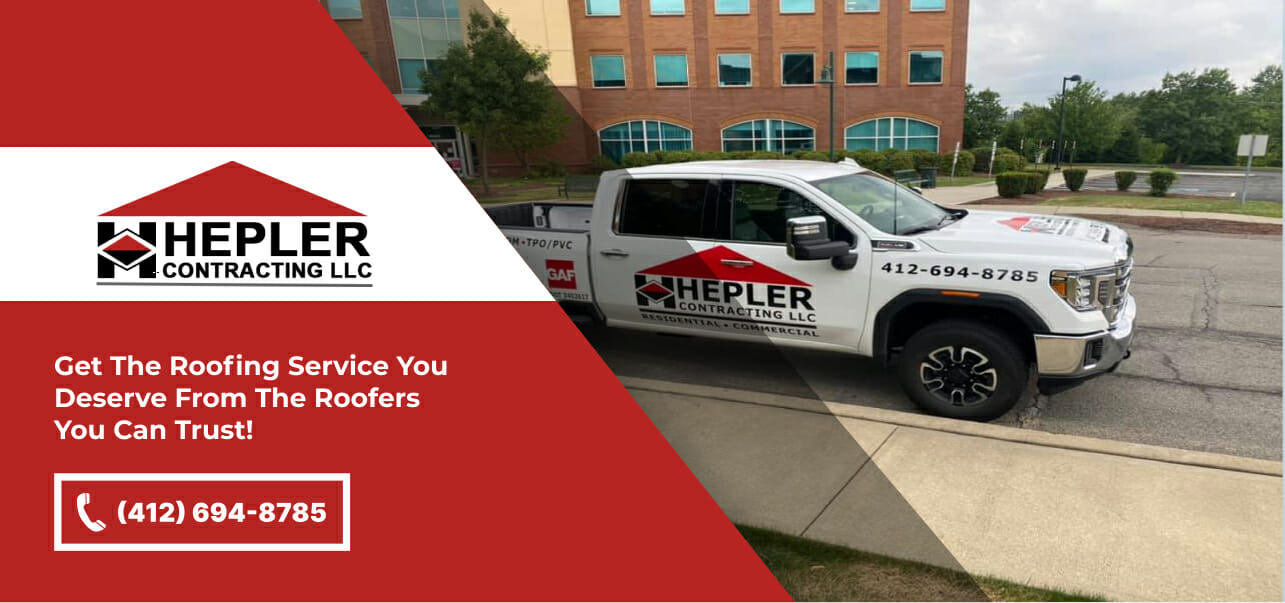A well-constructed and maintained roof is essential to safeguarding your home from the elements and ensuring its longevity and structural integrity. Among the various components that contribute to a durable and watertight roof, one crucial element that is often overlooked is roof valley flashing. Roof valleys, where two slopes meet, are particularly vulnerable to water infiltration, making proper flashing installation and maintenance imperative.
This blog post serves as your comprehensive guide to understanding the significance of roof valley flashing, exploring the various types available, the materials used in their construction, and the essential maintenance practices that prolong their lifespans.
What Is Roof Valley Flashing?
The importance of roof valleys in a roofing system cannot be overstated, as they play a crucial role in directing and managing water runoff from rain and melting snow. Roof valleys are formed where two sections of a roof meet, forming a V-shape channel. These valleys are particularly susceptible to water accumulation, and without proper management, they can become potential sources of leaks, water damage, and even structural issues. Here’s how roof valleys work and why they are so vital:
The Function of Roof Valleys
1. Water Management: Roof valleys act as natural channels that direct rainwater and melted snow away from the roof’s surface. Without valleys, water could accumulate in flat areas, causing ponding and degrading of the roofing materials. By guiding water to the roof’s edges and gutter system, valleys prevent stagnant water buildup.
2. Prevention of Water Infiltration: Strategically designed roof valleys prevent water from penetrating roofing materials and the underlying structure. Well-installed valley flashing creates a watertight seal at joints and intersections, safeguarding vulnerable roof areas and interiors from leaks and damage.
3. Structural Integrity: Prolonged exposure to water can compromise a building’s structural integrity. Roof valleys redirect water away from critical load-bearing sections, reducing the risk of rot, decay, and weakening of the roof’s supporting framework.
4. Prevention of Ice Dams: In cold climates, roof valleys play a crucial role in stopping ice dam formation. These dams occur when melted snow refreezes along eaves, leading the water to back up under the shingles. Properly designed valleys guide melting snow away from vulnerable areas, reducing the chance of ice dam formation and subsequent water damage.
5. Aesthetic Appeal: Roof valleys enhance a building’s exterior aesthetics. Skillfully designed and executed valleys contribute depth and character to the roofline, elevating the overall architectural style of the structure.
In summary, roof valleys are essential components of a roofing system, managing water, safeguarding against infiltration, preserving structural soundness, preventing ice dams, and enhancing the visual appeal of a building.
Ready to make the right choice for your home? Check our blog post: Roof Valley Guide: Choosing the Right Design for Your Home
Types of Roof Valley Flashing
Roof valley flashing comes in three primary types: open, closed, and woven. These variants share a common goal: directing water away from roof valleys to prevent water damage and leaks. Here’s a comprehensive breakdown of each type:
1. Open Valley Flashing
Open valley flashing employs a technique where roofing material is cut back along the valley, exposing the flashing. Rainwater flows directly over the flashing, follows the valley’s path, and eventually falls off the roof and into the gutter system.
Advantage:
- Efficient water drainage due to direct exposure.
- Can enhance aesthetics in certain architectural styles.
Disadvantage:
- Susceptible to debris accumulation, potentially leading to blockages.
- Heightened risk of leaks if not adequately maintained.
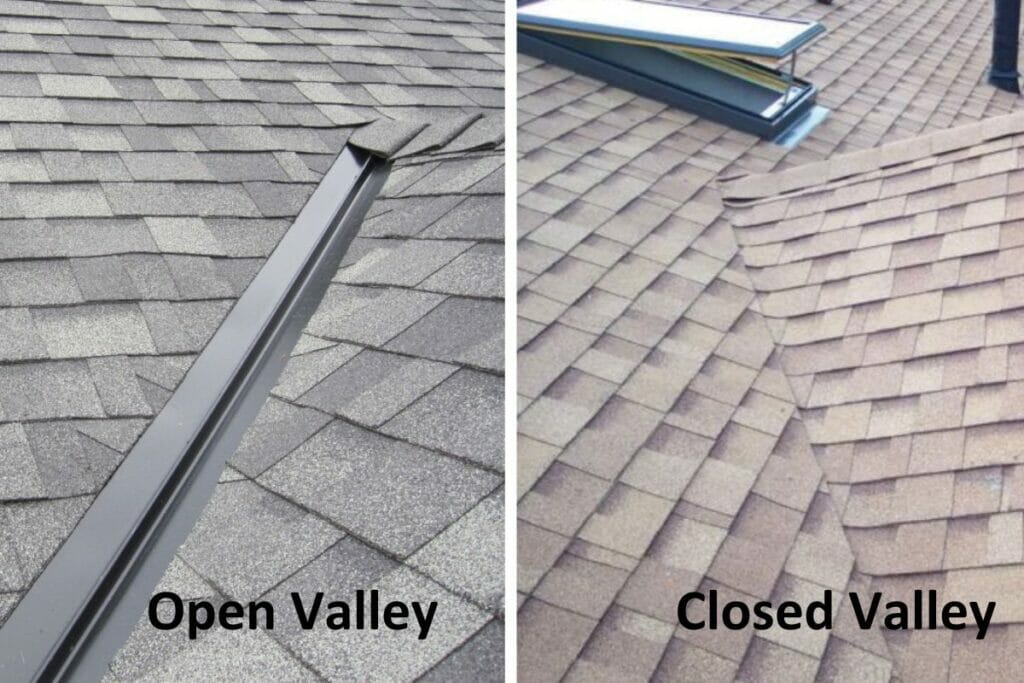
2. Closed Valley Flashing
Closed valley flashing entails layering roofing material over the flashing, concealing it from view. Rainwater is directed onto the roofing materials and is then channeled into the valley.
Advantage:
- Enhanced debris protection, lowering the risk of build-up.
- Offers a seamless and tidy appearance.
Disadvantage:
- Water runoff might be slightly less efficient compared to open valleys.
- May require precise installation to prevent leaks.
3. Woven Valley Flashing:
Woven valley flashing combines attributes from open and closed valleys. Shingles from both sides of the valley are interlaced, forming a robust and visually distinct pattern.
Advantage:
- Efficient water drainage with reduced debris accumulation.
- Provides an aesthetically pleasing and unique design.
Disadvantage:
- Demands skilled installation to ensure proper weaving and sealing.
- Potential for higher labor and material costs due to its intricacy.
Each method of valley flashing offers unique benefits and considerations, catering to diverse preferences and architectural needs. Your choice among open, closed, or woven valleys hinges on factors like your regional climate, roof design, and maintenance preferences. For an in-depth exploration, refer to our detailed guide on roof flashing techniques.
Roof Valley Flashing Materials
The choice of material for roof valley flashing depends on factors such as durability, cost, aesthetics, and local weather conditions. Copper, aluminum, and steel are three common materials used for roof valley flashing. Let’s explore the characteristics of each material:
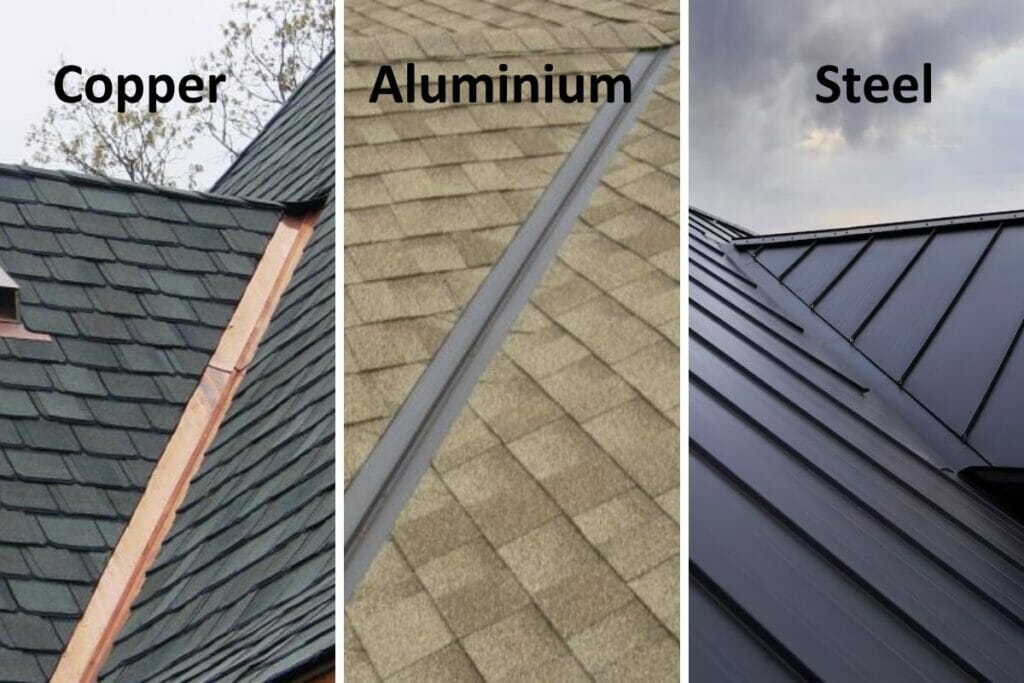
1. Copper Roof Valley Flashing:
- Durability: Copper is highly durable and naturally resistant to corrosion, making it an excellent choice for long-lasting roof valley flashing. Over time, it develops a patina that adds to its character and enhances its weather resistance.
- Aesthetics: Copper has a distinct appearance that many homeowners find appealing. It starts with a shiny reddish-orange color and gradually develops a greenish patina as it weathers.
- Cost: Copper is generally more expensive than other flashing materials upfront, but its longevity can make it a cost-effective choice in the long run.
- Installation: Copper flashing is relatively malleable and easy to work with, allowing for custom fitting to different roof angles and shapes.
- Maintenance: Copper requires minimal maintenance and is known for its longevity, with some installations lasting over a century.
2. Aluminum Roof Valley Flashing:
- Durability: Aluminum is corrosion-resistant and durable, though not as long-lasting as copper.
- Aesthetics: Aluminum flashing is available in various finishes, with a color to fit any home aesthetic. Some homeowners prefer the clean look of aluminum to the developed patina of copper.
- Cost: Aluminum is generally more affordable than copper, making it a popular choice for budget-conscious projects.
- Installation: Aluminum flashing is lightweight and easy to handle, making it relatively straightforward to install.
- Maintenance: Aluminum requires minimal maintenance and is resistant to rust and other forms of corrosion.
3. Steel Roof Valley Flashing:
- Durability: Steel flashing is strong and durable, but it is more susceptible to corrosion compared to copper and aluminum. Proper coating and maintenance are essential to extend its lifespan.
- Aesthetics: Steel flashing is available in various finishes, including painted options. Its appearance can mimic other materials and it pairs well with any architectural style.
- Cost: Steel is generally less expensive than copper and may be more affordable than aluminum, depending on the specific type of steel used.
- Installation: Steel flashing is sturdy and can be more challenging to work with compared to aluminum or copper. Careful installation and proper fastening are important to ensure its longevity.
- Maintenance: Regular maintenance and coatings are necessary to prevent corrosion and extend the life of this flashing.
Get started on your metal roof valley journey today with our blog post: How To Install A Metal Roof Valley & 3 Reasons Why It’s A Good Choice
Conclusion
With more than 55 years of combined experience, Hepler Contracting has been the trusted choice for Pittsburgh residents when it comes to roof valley flashing. Selecting the perfect roof valley flashing requires the consideration of many factors, including your existing roofing material, your budget, and your personal style, but luckily, we can help you!
As roofing professionals with years of experience, we understand every roof is unique. Call us today at (412) 694-8785 to discuss your roofing needs.
